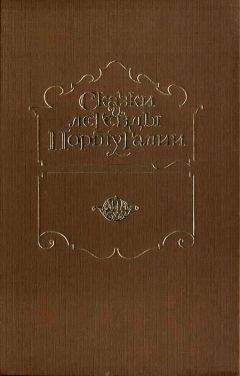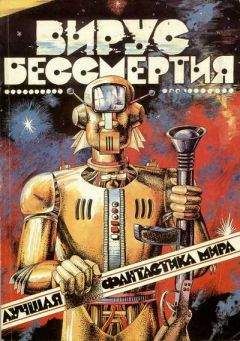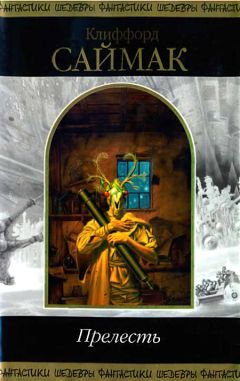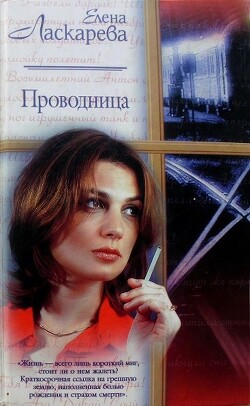Эрик Кандель - Век самопознания. Поиски бессознательного в искусстве и науке с начала XX века до наших дней
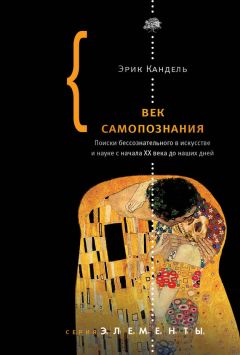
Помощь проекту
Век самопознания. Поиски бессознательного в искусстве и науке с начала XX века до наших дней читать книгу онлайн
Martinsdale, C. The Biological Basis of Creativity / In: Handbook of Creativity. R. J. Steinberg, ed. New York: Cambridge University Press, 1999.
Max, D. T. A chess star that emerges from the post-computer age // New Yorker, May 21, 2011: 40–49.
McGilchrist, I. The Master and His Emissary: The Divided Brain and the Making of the Western World. New Haven and London: Yale University Press, 2009.
Miller, A. I. Insights of Genius: Imagery and Creativity in Science and Art. New York: Copernicus, 1996.
Miller, E. K., and J. D. Cohen An integrative theory of prefrontal cortex function // Annual Review of Neuroscience 24 (2001): 167–202.
Podro, M. Depiction. New Haven: Yale University Press, 1998.
Rabinovici, G. D., and B. L. Miller Frontotemporal lobar degeneration: Epidemiology, pathophysiology, diagnosis, and management // CNS Drugs 24 (5) 2010: 375–398.
Ramachandran, V. S. The Emerging Mind. The Reith Lectures. London: BBC, Profile Books, 2003.
Ramachandran, V. S. A Brief Tour of Human Consciousness: From Impostor Poodles to Purple Numbers. New York: Pearson Education, 2004.
Ramachandran, V. S., and W. Hirstein The science of art: A neurological theory of aesthetic experience // Journal of Consciousness Studies 6 (6–7) 1999: 15–51.
Riegl, A. The Group Portraiture of Holland. Intro. by W. Kemp. Los Angeles: Getty Research Institute for the History of Art and the Humanities, 1999.
Sacks, O. An Anthropologist on Mars: Seven Paradoxical Tales. New York: Alfred A. Knopf, 1995.
Schooler, J. W., Ohlsson, S., and K. Brooks Thoughts beyond words: When language overshadows insight // Journal of Experimental Psychology 122 (1993): 166–183.
Searle, J. R. Minds, brains, and programs // Behavioral and Brain Sciences 3 (1980): 417–424.
Sinha, P., Balas, B., Ostrovsky, Y., and R. Russell Face recognition by humans: Nineteen results all computer vision researchers should know about // Proceedings of the IEEE 94 (11) 2006: 1948–1962.
Smith, R. W., and J. Kounios Sudden insight: All-or-none processing revealed by speedaccuracy decomposition // Journal of Experimental Psychology 22 (1996): 1443–1462.
Snyder, A. Explaining and inducing savant skills: Privileged access to lower level, less processed information // Philosophical Transactions of the Royal Society B 364 (2009): 1399–1405.
Subramaniam, K., Kounios, J., Parrish, T. B., and M. Jung-Beeman A brain mechanism for facilitation of insight by positive affect // Journal of Cognitive Neuroscience 21 (3) 2008: 415–432.
Treffert, D. A. The savant syndrome: an extraordinary condition. A synopsis: past, present, future // Philosophical Transactions of the Royal Society 364 (2009): 1351–1357.
Warrington, E., and E. M. Taylor Two categorical stages of object recognition // Perception 7 (1978): 695–705.
Глава 29. Когнитивное бессознательноеи творчествоBaars, B. J. In the theater of consciousness: Global workspace theory, a rigorous scientific theory of consciousness // Journal of Consciousness Studies 4 (4) 1997: 292–309.
Blackmore, S. Consciousness: An Introduction. New York: Oxford University Press, 2004.
Blackmore, S. Mind over Matter? Many philosophers and scientists have argued that free will is an illusion. Unlike all of them, Benjamin Libet has found a way to test it. Commentary // Guardian Unlimited, April 28, 2007.
Boly, M., Balteau, E., Schnakers, C., Degueldre, C., Moonen, G., Luxen, A., Phillips, C., Peigneux, P., Maquet, P., and S. Laureys Baseline brain activity fluctuations predict somatosensory perception in humans // Proceedings of the National Academy of Sciences USA 104 (2007): 12187–12192.
Crick, F., and C. Koch A framework for consciousness // National Neuroscience 6 (2003): 119–126.
Crick, F., and C. Koch What is the function of the claustrum? // Philosophical Transactions of the Royal Society of London, Biological Sciences 360 (2005): 1271–1279.
Damasio, A. Self Comes to Mind: Constructing the Conscious Brain. New York: Pantheon Books, 2010.
Dehaene, S., and J. P. Changeux Experimental and theoretical approaches to conscious processing // Neuron 70 (2) 2011: 200–227.
Dennett, D. C. Consciousness Explained. Boston and London: Back Bay Books, Little Brown, 1991.
Dijksterhuis, A. Think different: The merits of unconscious thought in preference development and decision making // Journal of Personality and Social Psychology 87 (5) 2004: 586–598.
Dijksterhuis, A., Bos, M. W., Nordgren, L. F., and R. B. van Baaren On making the right choice: The deliberation-without-attention effect // Science 311 (5763) 2006: 1005–1007.
Dijksterhuis, A., and T. Meurs Where creativity resides: The generative power of unconscious thought // Consciousness and Cognition 15 (2006): 135–146.
Dijksterhuis, A., and L. F. Nordgren A theory of unconscious thought // Association for Psychological Science 1 (2) 2006: 95–109.
Dijksterhuis, A., and Z. van Olden On the benefits of thinking unconsciously: Unconscious thought can increase post-choice satisfaction // Journal of Experimental Social Psychology 42 (2006): 627–631.
Edelman, G. Second Nature: Brain Science and Human Knowledge. New Haven: Yale University Press, 2006.
Epstein, S. Integration of the cognitive and the psychodynamic unconscious // American Psychologist 49 (1994): 709–724.
Fried, I., Mukamel, R., and G. Kreiman Internally generated preactivation of single neurons in human medial prefrontal cortex predicts volition // Neuron 69 (2011): 548–562.
Gombrich, E. H. Art and Illusion. A Study in the Psychology of Pictorial Representation. Princeton and Oxford: Princeton University Press, 1960.
Haggard, P. Decision time for free will // Neuron 69 (2011): 404–406.
Kornhuber, H. H., and L. Deecke Hirnpotentialändeerungen bei Wilkürbewegungen und passiven Bewegungen des Menschen: Bereitschaftspotential und reafferente Potentiale // Pflügers Archiv für Gesamte Psychologie 284 (1965): 1–17.
Libet, B. The experimental evidence for subjective referral of a sensory experience backward in time: Reply to PS Churchland // Philosophy of Science 48 (1981): 182–197.
Libet, B. Unconscious cerebral initiative and the role of conscious will in voluntary action // Behavioral and Brain Sciences 8 (1985): 529–566.
Moruzzi, G., and H. W. Magain Brain stem reticular formation and activation of the EEG // Electroencephalography and Clinical Neurophysiology 1 (1949): 455–473.
Piaget, J. The affective unconscious and the cognitive unconscious // Journal of the American Psychoanalytic Association 21 (1973): 249–261.
Sadaghiani, S., Hesselmann, G., and A. Kleinschmidt Distributed and antagonistic contributions of ongoing activity fluctuations to auditory stimulus detection // Journal of Neuroscience 29 (2009): 13410–13417.
Sadaghiani, S., Scheeringa, R., Lehongre, K., Morillon, B., Giraud, A. L., and A. Kleinschmidt Intrinsic connectivity networks, alpha oscillations, and tonic alertness: A simultaneous electroencephalography/functional magnetic resonance imaging study // Journal of Neuroscience 30 (2010): 10243–10250.
Schopenhauer, A. Essays and Aphorisms. London: Penguin Books, 1970.
Shadlen, M. N., and R. Kiani Consciousness as a decision to engage / In: Characterizing Consciousness: from Cognition to the Clinic? Research Perspectives in Neurosciences. S. Dehaene and Y. Christen, eds. Berlin; Heidelberg: Springer-Verlag, 2011.
Wegner, D. M. The Illusion of Conscious Will. Cambridge, MA: MIT Press, Bradford Books, 2002.
Глава 30. Творчество и системы головного мозгаAndreasen, N. C. The Creating Brain: The Neuroscience of Genius. New York: Dana Press, 2005.
Bever, T. G., and R. J. Chiarello Cerebral dominance in musicians and nonmusicians // Science 185 (4150) 1974: 537–539.
Bowden, E. M., and M. J. Beeman Getting the right idea: Semantic activation in the right hemisphere may help solve insight problems // Psychological Science 9 (6) 1998: 435–440.
Bowden, E. M., and M. Jung-Beeman Aha! Insight experience correlates with solution activation in the right hemisphere // Psychonomic Bulletin and Review 10 (3) 2003: 730–737.
Bowden, E. M., Jung-Beeman, M., Fleck, J., and J. Kounios New approaches to demystifying insight // Trends in Cognitive Sciences 9 (7) 2005: 322–328.
Bower, B. Mood swings and creativity: New clues // Science News, October 24, 1987.
Damasio, A. The somatic marker hypothesis and the possible functions of the prefrontal cortex // Proceedings of the Royal Society of London B 351 (1996): 1413–1420. 1996.
Damasio, A. Self Comes to Mind: Constructing the Conscious Brain. New York: Pantheon Books, 2010.
Fleck, J. I., Green, D. L., Stevenson, J. L., Payne, L., Bowden, E. M., Jung-Beeman, M., and J. Kounios The transliminal brain at rest: Baseline EEG, unusual experiences, and access to unconscious mental activity // Cortex 44 (10) 2008: 1353–1363.
Freedman, D. J., Riesenhuber, M., Poggio, T., and E. K. Miller Categorical representation of visual stimuli in the primate prefrontal cortex // Science 291 (2001): 312–316.
Gardner, H. Art, Mind, and Brain: A Cognitive Approach to Creativity. New York: Basic Books, 1982.
Gardner, H. Frames of Mind: The Theory of Multiple Intelligences. New York: Basic Books, 1983.
Gardner, H. Creating Minds: An Anatomy of Creativity Seen Through the Lives of Freud, Einstein, Picasso, Stravinsky, Eliot, Graham, and Gandhi. New York: Basic Books, 1993.
Gardner, H. Five Minds for the Future. Boston: Harvard Business School Press, 2006.
Geake, J. G. The neurological basis of intelligence: Implications for education: An abstract // Gifted and Talented (9) 1 2005: 8.
Geake, J. G. Mathematical brains // Gifted and Talented (10) 1 2006: 2–7.
Goldberg, E., and L. D. Costa Hemisphere differences in the acquisition and use of descriptive systems // Brain Language 14 (1981): 144–173.
Hawkins, J., and S. Blakeslee On Intelligence. New York: Henry Holt, 2004.
Hebb, D. O. Organization of Behavior. New York: John Wiley and Sons, 1949.
Jackson, J. H. Loss of speech: Its association with valvular disease of the heart, and with hemiplegia on the right side. Defects of smell. Defects of speech in chorea. Arterial regions in epilepsy // London Hospital Reports Vol. 1 (1864): 388–471.
Jamison, K. R. Exuberance: The Passion for Life. New York: Vintage Books; Random House, 2004.
Jung-Beeman, M. Bilateral brain processes for comprehending natural language // Trends in Cognitive Sciences 9 (11) 2005: 512–518.
Jung-Beeman, M., Bowden, E. M., Haberman, J., Frymiare, J. L., Arambel-Liu, S., Greenblatt, R., Reber, P. J., and J. Kounios Neural activity observed in people solving verbal problems with insight // PloS Biology 2 (4) 2004: 0500–0510.
Kapur, N. Paradoxical functional facilitation in brain-behavior research // Brain 119 (1996): 1775–1790.
Katz, B. Stephen William Kuffler // Biographical Memoirs of Fellows of the Royal Society 28 (1982): 225–259.
Kounios, J., Fleck, J. I., Green, D. L., Payne, L., Stevenson, J. L., Bowden, E. M., and M. Jung-Beeman The origins of insight in resting-state brain activity // Neuropsychologia 46 (2007): 281–291.
Kounios, J., Frymiare, J. L., Bowden, E. M., Fleck, J. I., Subramaniam, K., Parrish, T. B., and M. Jung-Beeman The prepared mind: Neural activity prior to problem presentation predicts solution by sudden insight // Psychological Science 17 (2006): 882–890.
Lehrer, J. The Eureka hunt: Why do good ideas come to us when they do? // New Yorker, July 28, 2008: 40–45.
Martin, A., Wiggs, C. L., and J. Weisberg Modulation of human medial temporal lobe activity by form, meaning, or experience // Hippocampus 7 (1997): 587–593.
Martinsdale, C. The Biological Basis of Creativity / In: Handbook of Creativity. R. J. Steinberg, ed. New York: Cambridge University Press, 1999.
McMahan, U. J., ed. Steve: Remembrances of Stephen W. Kuffler. Sunderland, MA: Sinauer Associates, 1990.
Miller, A. I. Insights of Genius: Imagery and Creativity in Science and Art. New York: Copernicus, 1996.
Miller, E. K., and J. D. Cohen An integrative theory of prefrontal cortex function // Annual Review of Neuroscience 24 (2001): 167–202.
Orenstein, R. The Right Mind: Making Sense of the Hemispheres. New York: Harcourt Brace, 1997.
Rabinovici, G. D., and B. L. Miller Frontotemporal lobar degeneration: Epidemiology, pathophysiology, diagnosis and management // CNS Drugs 24 (5) 2010: 375–398.
Ramachandran, V. S., and W. Hirstein The science of art: A neurological theory of aesthetic experience // Journal of Consciousness Studies 6 (6–7) 1999: 15–51.
Ramachandran, V. S. The Emerging Mind. The Reith Lectures. London: BBC, Profile Books, 2003.
Ramachandran, V. S. A Brief Tour of Human Consciousness: From Impostor Poodles to Purple Numbers. New York: Pearson Education, 2004.
Rubin, N., Nakayama, K., and R. Shapley Abrupt learning and retinal size specificity in illusory-contour perception // Current Biology 7 (1997): 461–467.
